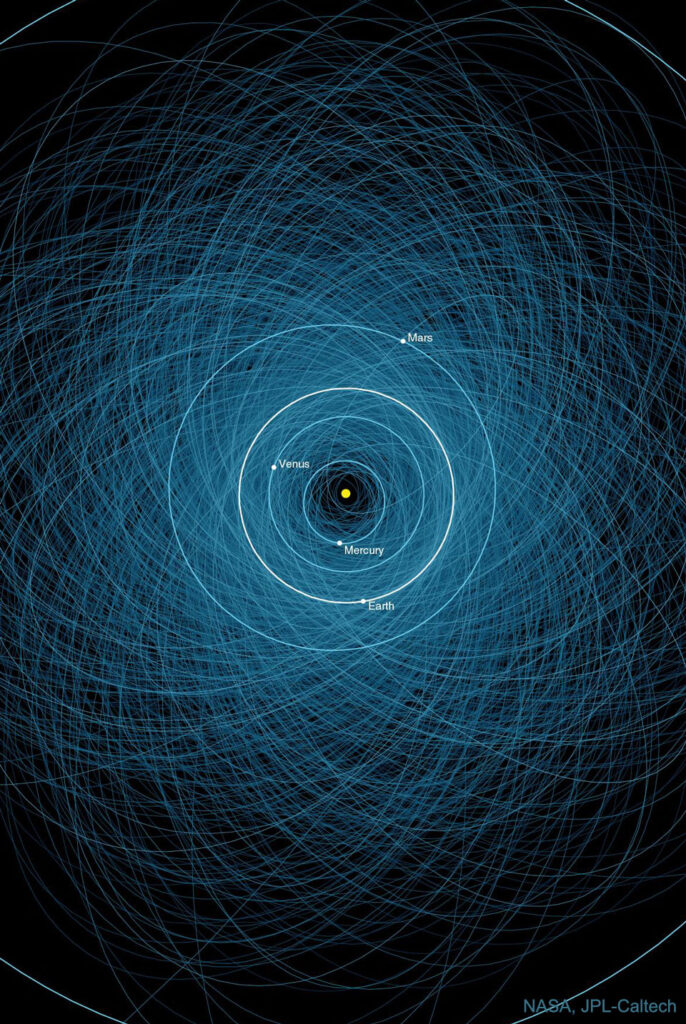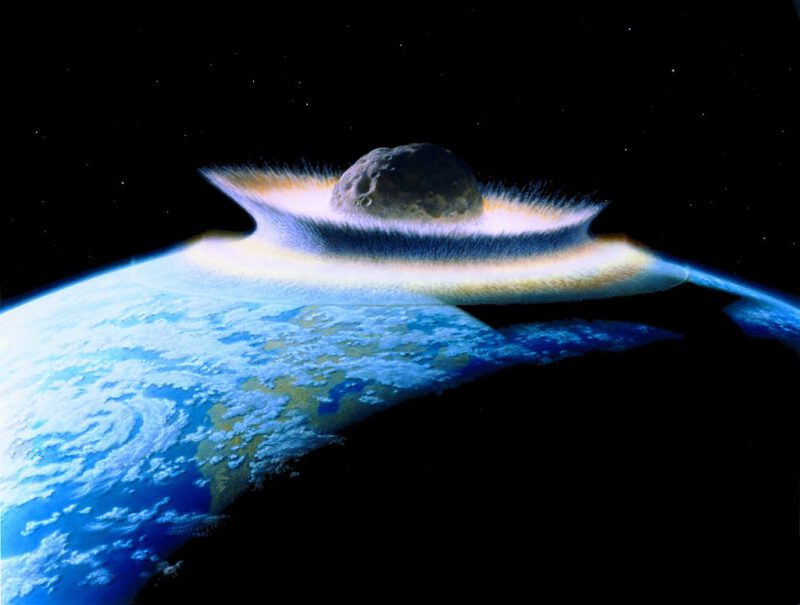Every month, there seems to be a fresh news alert about an asteroid “hurtling toward Earth.” Well, “alert” is perhaps too strong a word; in most cases, it is simply an article with a sensational headline created solely to garner clicks. The article invariably goes on to explain that the asteroid will not reach our solar system for another 1,000 years or there will be a “near-miss,” which, in cosmological terms, can constitute a fly-by of over one million miles away. On Nov. 1, one of these near-misses occurred as asteroid 2022 RM4 flew by the Earth, getting as close as 1.9 million miles away — roughly six times the distance of our moon.
Our world is undoubtedly a fragile one, endlessly spinning away, unaware of the celestial threats ever present in our violent universe. Of the five mass extinction events in Earth’s history, at least three are attributed to meteor strikes. Detritus from outside the relative safety of our solar system often penetrates our cosmic neighborhood, but for the last 65 million years, Earth has been spared from “planet-killer” and “extinction level” asteroids. There are several reasons for this:
1. Jupiter acts as Earth’s bodyguard.
As the biggest planet in our solar system, Jupiter has a massive gravity pull, sucking hazardous debris into its orbit and atmosphere. If our solar system were a nightclub, Jupiter would be the 6’ 5” bouncer turning uninvited guests away at the door. It’s an exclusive club, and asteroids are not on the list. However, astronomers have recently suggested the celestial colossus could also re-direct comets and asteroids toward Earth’s direction.
2. The universe is experiencing a time of unprecedented stability.
The universe we know started 13.8 billion years ago with a big, sudden bang. Just like an expanding balloon, the universe inflated from a size smaller than an electron to nearly its current size within a tiny fraction of a second.
During the primordial period of the early universe, violence was the status quo. Nebulae begat protogalaxies, which led to explosive collisions or rock and dust that would become planets and moons. Gases condensed to form stars. Now, the universe is enjoying the fruits of its labors, settling down like a once-wayward bachelor.
There is, of course, still volatility in the vast reaches of space, but we see far fewer collisions like the ones that pock-marked the face of the moon billions of years ago.
3. Earth’s atmosphere acts as the final barrier between us and a major celestial impact.
Scientists estimate that fewer than 10,000 meteorites collide into Earth’s land or water. This is because they burn up in Earth’s atmosphere before hitting its surface. Most of the space debris heading toward Earth is smaller than an asteroid.
These pieces of rock and dust are called meteroids, and become meteorites if they make their way to the ground. In comparison, the moon, which doesn’t have an atmosphere, gets hit by 11 to 1,100 tons of varying sizes of space rocks every year.
While we are enjoying a relatively peaceful time, cosmologically speaking, the bombardment of rocks and dust on our moon shows our solar system is not an empty place.
Potentially Hazardous Asteroids

According to NASA, in 2021, there were more than 2,000 known potentially hazardous asteroids (PHAs).
These documented tumbling boulders of rock and ice are over 140 meters across and will pass within 7.5 million kilometers of Earth — about 20 times the distance to the Moon. Although none of them will strike the Earth in the next 100 years, not all PHAs have been discovered. Past 100 years, many orbits become hard to predict.
Were an asteroid of this size to impact the Earth, it could raise dangerous tsunamis and significant ash clouds.
To help mitigate this existential threat, NASA created the Double Asteroid Redirection Test – or DART. DART was the first-ever mission dedicated to investigating and demonstrating one method of asteroid deflection by changing an asteroid’s motion in space through kinetic impact.
The first DART mission sent an unmanned spacecraft to disrupt the orbit of a moonlet asteroid called Dimorphos orbiting a larger asteroid called Didymos.
On Sept. 26, DART successfully impacted Dimorphos, a small body just 530 feet (160 meters) in diameter.
NASA used the analogy of a golf cart hitting the side of an Egyptian pyramid to convey the relative difference in size between tiny DART and Dimorphos, the smaller of the two asteroids.
Prior to the test, Dimorphos orbited Didymos in roughly 16 hours. NASA expects the impact to shorten Dimorphos’ orbit by about 1%, or roughly 10 minutes. Though small, if done far enough away from Earth, a nudge like this could potentially deflect a future asteroid headed toward Earth just enough to prevent an impact.
Apophis
Of all the near-misses and blown-out-of-proportion hype surrounding delinquent asteroids, there is one that poses a reasonable threat to our vulnerable planet.
Affectionately named for the Egyptian God of Chaos, Apophis is a massive space rock that will pass by Earth several times in the upcoming decades.
According to EarthSky, on Friday, April 13, 2029, Apophis will zoom past Earth at a distance of 19,662 miles (31,643 km) — approximately one-tenth the distance between the Earth and the moon.

A collision with Earth has been ruled out for that and most other passes, but one pass is still giving astronomers a reason to be nervous. When the rock approaches Earth in 2068, there’s a very slim chance it might hit us.
Data on Apophis initially suggested it would not hit Earth in the foreseeable future, but new calculations that take into account the Yarkovsky effect show a roughly a 0.00067% chance of the asteroid impacting Earth, according to a study from the University of Hawaii’s Institute for Astronomy The Yarkovsky effect, also known as the Yarkovsky drift, is a phenomenon in which materials within an asteroid can propel it and alter its orbit.
Radioactive material, for example, can seep out of the rock and give it a very slight “boost,” which can be enough to take it on a slightly different path and pose a danger to us or other planets.
Measuring over 300 meters across and packed with metal, the asteroid would cause an incredible amount of damage if it impacted Earth.
According to Universe Today, if the asteroid hit land, it would flatten thousands of square miles. If it hit a major city, like London, it would level the area, killing millions of people in the process. If it hit an ocean, massive tsunamis would ensue.











